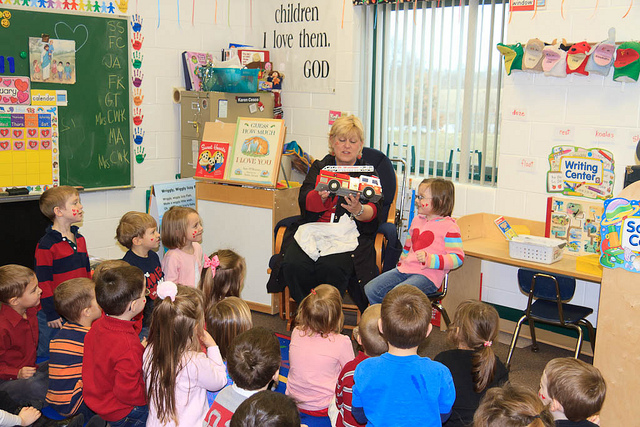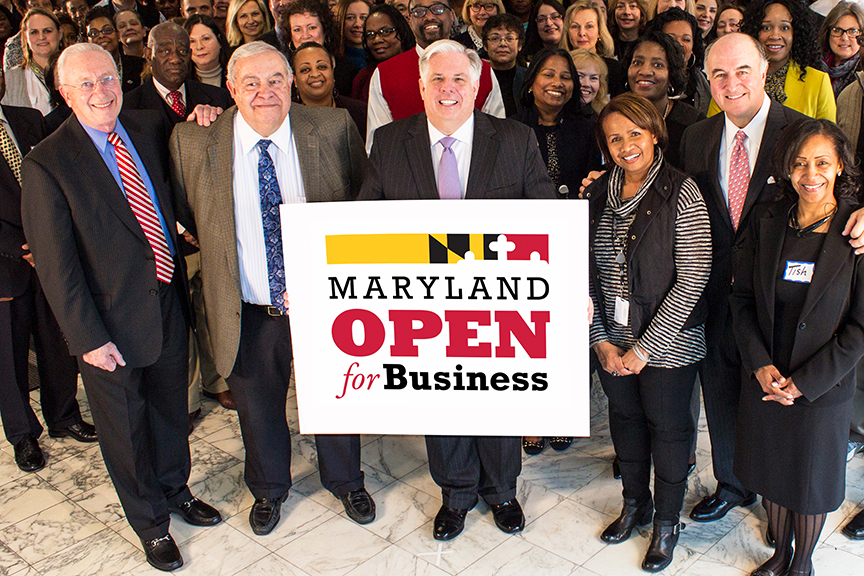By Megan Poinski
Megan@MarylandReporter.com
This was National School Choice Week in America, marked by over 400 events around the country to celebrate public charter schools. But there was only one small event announced in Maryland, a dinner discussion set for next week in Baltimore, and no recognition of the week at the State House.
Public charter schools are increasing as an alternative educational option throughout the nation. But advocates say Maryland’s laws and the scrutiny given to new charter applicants are slowing progress toward more school choice.

Students at Afya Public Charter School in Baltimore smile for the camera. Photo courtesy of the Afya Public Charter School website.
Maryland’s charter school law was passed in 2003, one of the last states in the nation to allow charter schools. Right now, the state has 51 charter schools, with a 52nd starting classes in the fall. All but 14 of these schools are in Baltimore.
Charter schools are publicly funded non-religious schools that are organized differently than a traditional public school. While boards of education set the standards and curriculum for public schools belonging to a school district, charter schools set out the way they are organized – as well as educational philosophies and curriculum – in a charter document.
These schools receive public funds and have to comply with numerous state standards, like students achieving a certain level of test scores and meeting mandatory attendance goals. But they are more self-directed, more community-oriented, and tend to utilize different methods for teaching and learning.
“Charter schools are aligning decision making authority with the resources in the school,” said David Borinsky, chairman of the Maryland Charter School Network.
But the law governing charter schools in Maryland hinders the development of new schools, many advocates say. Maryland’s charter school law recently received a D on a national report card put together by the Center for Education Reform. Alison Consoletti, the organization’s vice president of research, said that Maryland has the nation’s seventh-weakest charter school law. Since the law was first established, Consoletti said that Maryland has been in the bottom third when it comes to charter school law.
“Generally, if you look across all of the major categories (included in the report card), you will see pieces that Maryland is missing to have high quality charters or a high number of charters,” she said. “It is lacking in a high number of categories.”
Open admissions and public funding
Borinsky’s group is a statewide network of professionals and supporters of charter schools. They both provide information about charter schools to those who seek it, support groups who are trying to start charter schools, and lobby state and local governments on behalf of charter schools.
Charter schools are open to anyone and get their funding from state and local governments. They are not allowed to have any admission requirements, and many are filled with students from the local area. Other slots in the school are filled by lotteries.
Because of the flexibility a charter school can have, they tend to have different types of teaching philosophies. Some charter schools are Montessori schools, emphasizing hands-on and visual learning. Some charter schools are part of the Knowledge Is Power Program — commonly abbreviated as KIPP – which puts an emphasis on learning and student achievement. Some charter schools focus on science, technology, education and math (STEM). Some have foreign language immersion programs.
Borinsky said that because of the way they are structured and run, charter schools are much closer to the community where they are located. They have more partnerships, and they engage everyone in a different way.
“Charter schools are so open-source,” he said, drawing an analogy to community-programmed software applications. “They are more open to volunteers and collaboration. People get invested in their charter schools, and they are great at getting parents to be more involved.”
Consoletti said that because of the unique ways that charter schools are run and how they teach students, they often make a positive difference in urban school districts.
Giving options to children
Del. Sandy Rosenberg, a Baltimore Democrat who has backed legislation to improve charter schools in the General Assembly, agreed.
“It’s worthwhile to give kids these options,” Rosenberg said.
Borinsky said that some of the state’s best schools are charter schools. Rosemont Elementary/Middle School went from being one of Baltimore City’s worst to one of the best. It got to be that way through a partnership with Coppin State University and community engagement, Borinsky said.
The Baltimore Montessori Public Charter School, he said, is also a rousing success. The Montessori teaching style produces high achieving students. There are students from across the economic spectrum there – from the very poor to the quite well off. There’s a long waiting list, and both the parents and students are happy with the school.
“This is what everybody wants a charter school to be,” Borinsky said. “It hits the bull’s-eye.”
Bobbi Macdonald, executive director of the City Neighbors Foundations, which runs three Baltimore City charter schools, said that the quality education choices available today are amazing. City Neighbors’ schools use the arts, creativity, expression and community to engage students.
“We have created a vision of what public education in Baltimore can be, and it’s beautiful, joyful and powerful,” Macdonald said.
Monday: Opposition to charter schools





There is little public converstaion about charters in Batimore and the particular contribution they are making in Baltimore CIty. So this is a good start. As group of schools Baltimore’s charters consistently out perform traditional schools and sevearl done great work closing the achievement gap. In Baltimore Charters are fully part of the public school system, with represented employees. They are mostly “home grown” overseen by local non profits. Baltimore stands out in the national converstion – which is usually riddled with unchallenged assumptions – as a place where the schools are part of the City’s overall reform effort. I agree with Mr. J that charters have not cornered any market on innovation but there is too much good in those 33 schools to dismiss them.
From reading this piece, it is as if the charter model invented, say, the Montessori method or are the only ones truly invested in student achievement. This constantly pits charter schools versus traditional public schools. What happens is that this leaves children and parents stuck in the middle of all of our petty squabbles. I support charters in spirit, especially having taught in one over my summers, but let’s not pretend for a moment that they are somehow keepers of the torch of innovation. They are still largely brick and mortar buildings, they separate by grade levels and ability, they have an Essentialist curriculum. They hire teachers, administrators, have a top-down management structure, they do nearly all of the things public education has been doing for over 100 years. Plus, we also have to acknowledge that chartered institutions do NOT outpace the progress of traditional public schools. What I don’t understand then, given the limited resources we have available, why we would rather not spend more money, time, effort, and resources on the schools already in existence. Why placate communities with promises that will largely remain unkept at the expense of strengthening and legitimizing the institutions on which they already rely. So many well-meaning folks want to get into this charter game and if we continue to lower the bar of participation, I feel that the rigorous evaluation necessary to keep fly-by-night operators out of the charter “business” will no longer work.
Too many baseless assertions go unquestioned in this piece. For example, take the line that “charter schools are much closer to the community where they are located.” With few exceptions, charter schools in Baltimore are open to students citywide. While they may draw students who live nearby, they are not neighborhood schools. If admission is so desirable that it is decided by a lottery, parents who live across town have the same odds of getting in as those who live across the street.
Montessori and City Neighbors were founded by relatively well-off parents who “chose” to put their resources into creating public schools that they can have a strong hand in governing. In contrast, traditional public schools are governed by the District. Traditional school principals now control a large percentage of their budgets, so they could, in theory, choose their own mission and philosophy and fund their priorities accordingly. But few have the philanthropic support that charters such as City Neighbors and Montessori have the connections to drum up.
The notion that Baltimore Montessori is a “rousing success” is also baseless, unless success is defined solely on the basis of demand. If “success” is to be defined by test scores, as it is for traditional public schools, then Baltimore Montessori is a failure. It was not among the 15 Baltimore City Public Schools to make Adequate Yearly Progress last year. Neither was City Neighbors. Another yardstick for measuring success might be a charter school’s ability to close the achievement gap. A reporter might ask how the test scores of “the very poor” at Baltimore Montessori stack up against the scores of students whose parents are “quite well-off.”
Unless this series begins to ask and answer questions like these, reading it as anything other than good PR for the charter school movement will be impossible. I urge readers to wonder whether “weak” charter school laws aren’t protecting us from this unquestioned good.
And no word about the Unions, its overpaid teachers and its entrenched democratic legilators.
Maybe there will be something about that in “Part 2.”